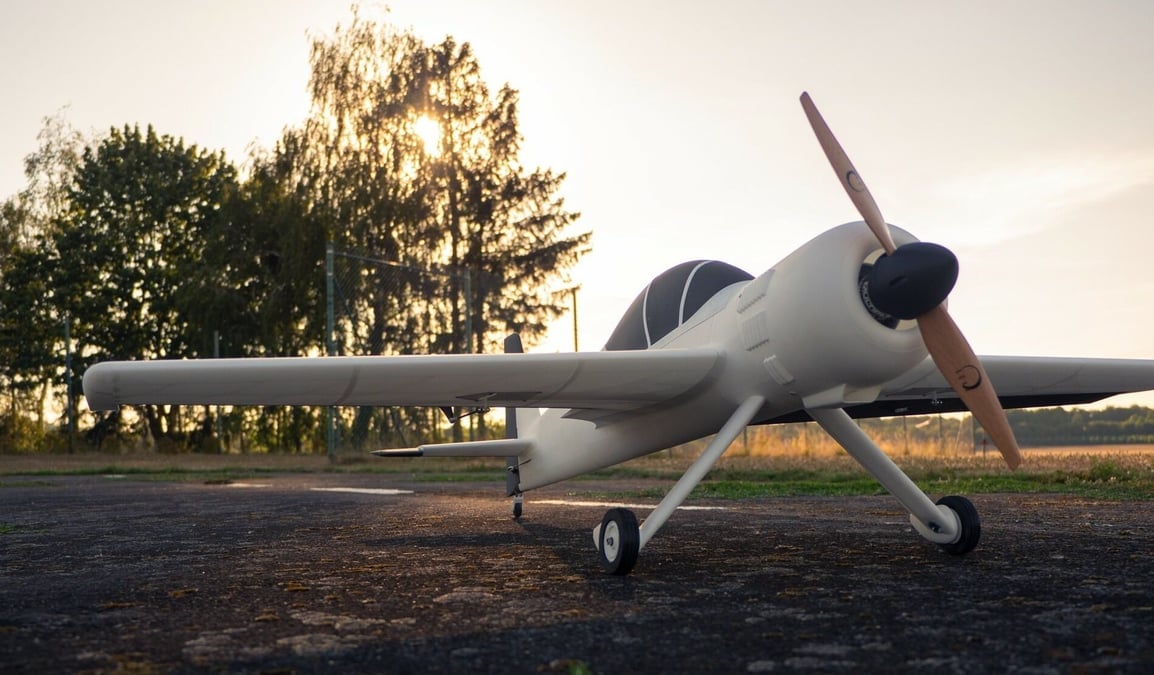
Let's embark on a thrilling journey through the world of 3D printed radio-controlled (RC) planes. Unquestionably, 3D printing technology has revolutionised various sectors, and the RC plane hobby is no exception. By harnessing the power of 3D printing, enthusiasts can now create lightweight, detailed, and innovative RC model aircrafts with exceptional flight characteristics.
1. The Dawn of 3D Printed RC Planes
The second generation of 3D printed airplanes is here, and they are lighter than ever. These planes have been tested and modified to adapt to the mechanical properties of new, revolutionary filaments such as LW-PLA from Colorfabb. This guarantees that despite the significant weight reduction, the models are still strong enough to perform any kind of aerobatics maneuvers (more than ± 10G) or hard landing.
The process of creating these planes is simple:
- Purchase and download STL files /G-codes and Cura profiles.
- Add the G-codes into your printer and assemble your plane!
Note: Before purchasing a plane, you can download a test part to get a feel for the process.
2. Learning from Nature
When it comes to designing 3D printed planes, biomimicry plays a crucial role. By learning from nature, we can develop lightweight, strong, and efficient planes. The design freedom that 3D printing technology offers should be used cleverly, otherwise, you might not be taking full advantage of this incredible manufacturing method.
3. Designed for 3D Printing
Every detail of these planes has been designed with 3D printing in mind, from the conceptual design phase. This allows for the creation of complex shapes, such as winglets, which are much more difficult and expensive to build with traditional manufacturing technologies.
4. Engineering Projects
With a low-cost 3D printer, you can print functional parts for complex mechanisms like a radio control airplane without losing performance when compared with traditional RC planes. All models have been tested with Anet A8, one of the market's most affordable printers. Additionally, the main electronic components have been standardised, meaning you can use the same electronics in any of the models, reducing the price even more.
5. The Perks of 3D Printing
Crashing is part of this hobby, but with a 3D printer, you have a factory at home! If you crash your plane, you can print the damaged parts again, saving a lot of money. The electronic elements, which are more expensive, rarely suffer any damage during a crash. Critical parts are designed to be detachable, allowing you to replace them easily.
6. A Glimpse at 3D Printed RC Plane Models
RC model pilots have a wide range of 3D printed models to choose from, including classic airplanes, jets, acro models, birds, gliders, biplanes, and many more. Each model is carefully designed and tested to ensure excellent flight characteristics.
7. Choosing the Right Construction Method
When selecting a model, note that there are two construction methods. The earlier designs are printed with normal PLA and require CURA for slicing. The newer models are mostly printed in LW-PLA and are designed differently. They can be processed with other slicers and are more stable, less sensitive to heat in the sun, and easier to repair.
8. Expanding the World of 3D Printed RC Planes
3DLabPrint is a 3D modeling studio based in Brno, Czech Republic, specialising in providing affordable large-scale RC aircraft models. For prototyping and testing their creations, they use four Original Prusa i3 MK3S printers. Over the years, their collection has grown into more than 50 different machines, catering to the needs of diverse enthusiasts.
9. The Beauty of 3D Printed RC Planes
3DLabPrint models are not 100% exact replicas. They are tweaked to improve flight characteristics. Despite these adjustments, the models are incredibly detailed and can serve as beautiful static maquettes even if you don't have any actual flight ambitions.
10. The Future of 3D Printed RC Planes
With the continuous development of 3D printing technology, the future of 3D printed RC planes looks promising. As the community of enthusiasts continues to grow, we can expect many more innovative and exciting designs to emerge. So, fasten your seatbelts and get ready to take flight with 3D printed RC planes!
Remember: "That’s the great thing about 3D printing: you don’t have to wait for the parts to arrive in a couple of days. You can simply print spare parts at home and use them when you need them." - Stepan Dokoupil, founder of 3DLabPrint.
Comments
Post a Comment